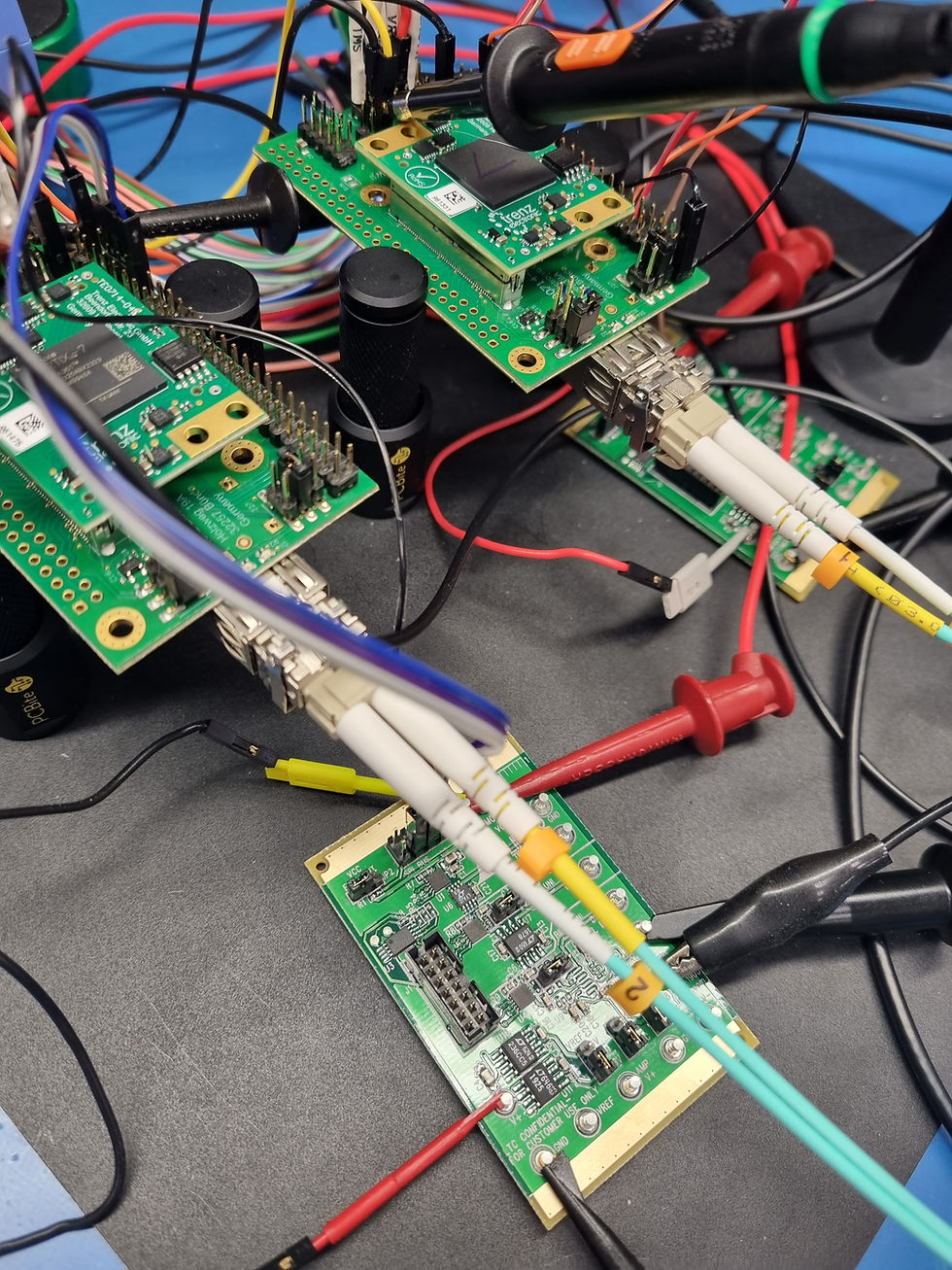MicroZed Chronicles: The 400th Edition
- Adam Taylor

- Jul 7, 2021
- 3 min read
Updated: Jun 27
Back on the 29th September 2013, I sat down and wrote what would become the first blog in this series. It was a simple look at how to bring up the Zynq 7010 on the MicroZed. 400 weeks later and I find myself again sitting down, again on a Sunday to write the 400th instalment.
It has been quite a journey and I never expected writing the first blog where it would lead and eventually what it would enable. However, over all instalments the blog has been focused on one element helping people, especially younger engineers and those just starting out to understand how to design with modern FPGAs and in particular Xilinx FPGA and SoC.

You can find all the blogs from the start to the latest here however, lets take a look at some of the more interesting blogs and indeed Hackster projects.
Let’s start at the beginning, if you want to know how to configure the basic Zynq 7000 series and to get up and running the original blogs.
However, over the years Vivado has matured significantly and SDK has been replaced by Vitis so a more up to date version can be found.
Over the course of the blogs, we have looked at everything from getting started with HLS to Image processing, working with MicroBlaze, Arm M1 and M3 cores, creating embedded Linux solutions, rapid prototyping with PYNQ and even more recently some throw backs to non-integer clock division and switching. Of course, we have also looked in depth at the MPSoC, RFSoC, Alveo and going forwards Versal and Kria.
Some of the boards featured in the blog series include the Arty A7/S7/Z7, Cora, Ultra96, ZCU111, Zedboard, MiniZed, ZCU104, KCU105, ZCU102, SP701, Zybo, PYNQ Z1/Z2, Nexsys Video, Genesys 2, Genesys ZU, Zedboard, Snickerdoodle, TE802, ZynqBerry, ZynqBerry Zero, TYSoM, Basys 3, ALVEO U50 and U200, VMK180, Kira and of course the MicroZed.
This blog also led to the development of the SensorsThink IIOT board, which you will be hearing lots more about in the coming months.





Software wise we have worked with Vivado, SDK, SDSoC, SDAccel, PYNQ, Vitis, Petalinux, SLX FPGA, GHDL, UVVM, OpenCL, and Vitis AI.
What has been amazing over the series has been to engage with readers and help them address their issues.
One of the most exciting off shoots from the blog has been the creation of more in depth Hackster projects and webinars walking through detailed project builds. The projects and webinars often have a wide and varied topics which is a lot of fun.
Over the last three years I have created 66 Hackster projects some of my favorites are
Portable Minzed Thermal Imager – This creates a nice and simple thermal imager using a MLX90640 IR Thermal camera and simple SPI display
Helping Harry’s Heart – Using a RF Respiration sensor to monitor my dogs failing heart.
Motor Control with the Minized – How to control motors with the MiniZed
Creating a Zynq Image processing platform – How to create an image processing platform.
Integrating the Ultra96 & Alexa – How to connect the U96 to Alexa.
I have also created several webinars and training courses many of them are linked in this blog and cover Vivado basics, Working with ARM M1 and M3 cores, Introduction to PYNQ, Getting started with Vitis, Motor Control with the Minized and creating mission critical developments.
In addition to the ones mentioned in the blog there are.
Hello Ultra96 – Introduction to the Ultra96 and creating applications (slides)
Concept to Prototype – A look at image processing systems from concept to prototype and beyond with the Ultra96, Vivado, PYNQ, Vitis and Vitis AI
MiniZed Technical Training Course - Free 3 day training the Zynq 7000 looking at Vivado, BareMetal and Petalinux
Ultra96 Technical Training Course - 3 day training the Zynq MPSoC looking at Vivado, BareMetal and Petalinux
Breakout with the Basys 3 – Creating a breakout style game on the Basys 3 board.
It has been a great nearly eight years creating the content, but of course the biggest thanks go to all who read the blogs and projects each week. Thank you!
I have no plans of stopping any time soon, and I have plans to create some more focused material on the MicroBlaze and RISC-V. Along with more focus on Versal and Kria of course.
What would you like to see addressed as we go forward?




